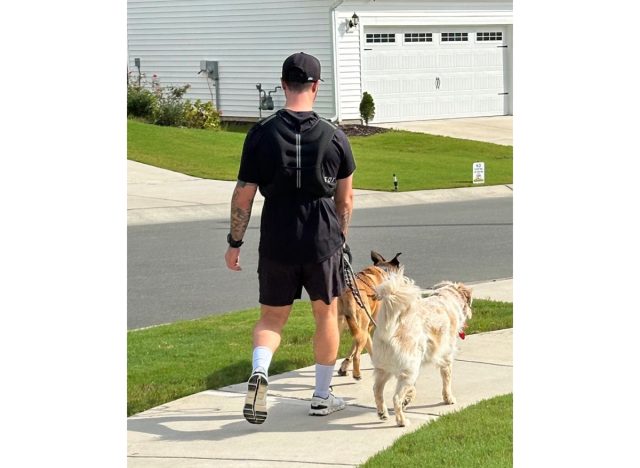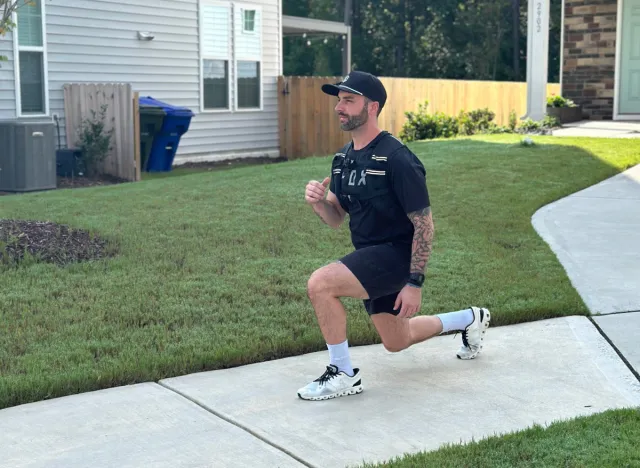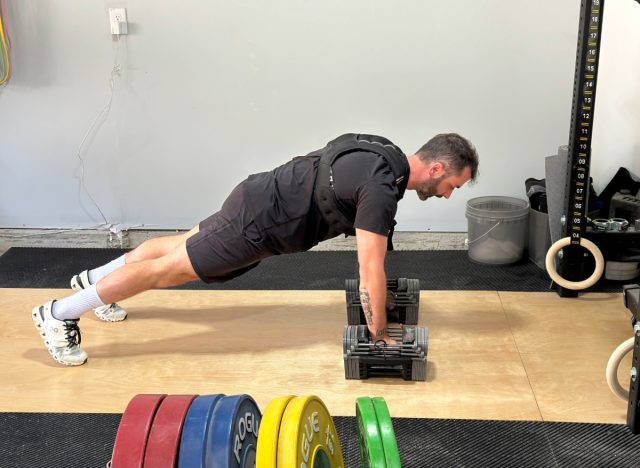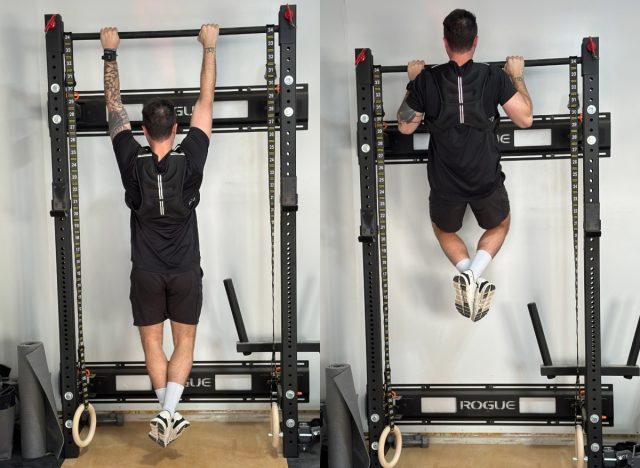When I feel like I need to clear my mind or get in some light cardio, I usually opt for walking. But for the past two weeks, I decided to step it up a notch by wearing a 16-pound weighted vest during all my walks. And by all walks, I mean every single one – whether I was walking my dogs, going to the park, or just taking a stroll around the neighborhood. I wanted to test if the added weight would actually make a difference in my fitness level or if it would just result in a bit more muscle soreness.
My walking routines were also diverse. Some days, I would go for long, steady walks that lasted for 45 minutes or more. Other times, I would increase the intensity by incorporating speed walking intervals or including long intervals to challenge my endurance. It wasn’t just limited to walking though; I also used the weighted vest for HIIT workouts, dips, pull-ups, pushups, and any other exercises I could think of. I was curious to see if this simple change could lead to significant improvements.
So, how did the two weeks with the weighted vest go? Let’s just say that the extra 16 pounds did more than just increase the load on my body – it introduced a whole new level of difficulty and some unexpected advantages.
The Weighted Vest Challenge: My Walking Routine

During this two-week test period, I mixed things up with my walking workouts. I started mornings with a steady-state walk—just me, my dogs, and the vest. These walks usually lasted 45 minutes or more, and while they weren’t super intense, that extra 16 pounds added a surprising amount of resistance. It wasn’t like carrying dumbbells, where the arms and back typically take the hit. With the vest, I felt the challenge all over—my core, legs, and even my posture had to work harder.
On other days, I switched things up with speed walk intervals. Picture this: a few minutes of fast-paced walking, followed by a minute or two of slower recovery. I repeated that cycle for the entire session, and let me tell you, that vest turned up the intensity. It felt like I was doing a mini-HIIT workout just by walking.
Then, there were long intervals—similar to the speed walks but with longer periods of sustained effort. These sessions weren’t easy, but they were incredibly rewarding. By the end of each workout, I felt the burn in my legs and glutes and was drenched in sweat.
Why Walking with a Weighted Vest Is a Game-Changer for Fitness

Walking with a weighted vest might sound simple, but the benefits are potent.
First, the added weight increases the intensity of an otherwise low-impact workout. This means you can burn more calories in less time without the joint strain of running or jumping exercises. My heart rate spiked faster and stayed elevated, even during steady-state walks. It was like turning up the volume on a workout that generally sits at a low hum.
Wearing the vest also builds strength in muscles you might not expect. My core was constantly engaged to support the extra weight, and my legs—especially my quads and calves—worked overtime with every step. Even my back muscles had to kick in to maintain good posture, preventing me from slumping forward under the weight. The result? A stronger, more balanced body overall.
And if you’re looking to improve your endurance, a weighted vest can do wonders. The longer I wore it, the more I felt my stamina increase, whether walking, performing bodyweight exercises, or even going about daily activities.
Unexpected Benefits of Wearing a Weighted Vest for Workouts

Besides the obvious physical benefits, I noticed some unexpected perks from using a weighted vest.
1. I became more mindful of my posture.
The vest made me way more mindful of my posture. With the extra weight pressing down, I couldn’t afford to slouch. I had to keep my shoulders back and my core tight, which translated into better posture even when I wasn’t wearing the vest.
2. I moved more efficiently.
I also became more efficient with my movements. The vest forced me to walk with intention, using each step to propel myself forward rather than dragging my feet. Intenful walking translated into a smoother, more powerful stride—something I didn’t know I needed to improve.
3. I stayed more focused and engaged during my walking sessions.
Finally, the vest made every walk feel like a mini workout. Instead of just going through the motions, I had to stay focused and engaged the entire time. This meant I got more out of my walks, even when they weren’t super intense. It was a subtle but effective way to push my limits without overtraining.
Tips for Getting the Most Out of Weighted Vest Workouts

If you’re thinking about adding a weighted vest to your routine, here are a few tips to help you get started:
- Start light and work your way up. If you’re new to using a vest, begin with a lighter weight (around 10% of your body weight) and gradually increase as your body adapts.
- Focus on form. Good posture is vital. Keep your shoulders back, chest up, and core engaged to avoid injury and maximize the benefits.
- Mix up your workouts. While wearing the vest, alternate between steady-state walks, speed intervals, and strength exercises like pull-ups, pushups, or squats to challenge different muscle groups.
- Take it slow. Don’t rush into long workouts right away. Let your body adjust to the added weight, and pay attention to how you feel—especially your joints.
By the end of two weeks, my body definitely felt stronger, my endurance was up, and I even noticed an improvement in my posture. The weighted vest was a simple but powerful tool, helping me get more out of my walks and everyday activities. Whether you want to level up your cardio, build strength, or just add a new challenge to your routine, a weighted vest is worth a try.
Frequently Asked Questions (FAQs)
What are the benefits of walking with a weighted vest?
When you walk with a weighted vest, you are adding an extra challenge to your workout. This can help increase the intensity of your walking exercise, leading to improved strength, endurance, and calorie burn. Additionally, it can help improve bone density and posture over time.
How heavy should the weighted vest be for walking?
The weight of the vest will depend on your fitness level and goals. It is recommended to start with a vest that is about 5-10% of your body weight. As you get more comfortable, you can gradually increase the weight of the vest. It is important not to add too much weight too quickly to avoid injury.
Can walking with a weighted vest help with weight loss?
Walking with a weighted vest can aid in weight loss as it increases the intensity of your workouts, leading to more calories burned. However, weight loss also relies on maintaining a healthy diet and overall lifestyle. The weighted vest can be a helpful tool in a comprehensive weight loss plan.
Are there any risks or precautions to consider when walking with a weighted vest?
It is essential to start slowly and listen to your body when using a weighted vest. Make sure the vest fits correctly to avoid strain or injury. If you have any underlying health conditions or concerns, it is best to consult with a healthcare provider before incorporating a weighted vest into your exercise routine.






